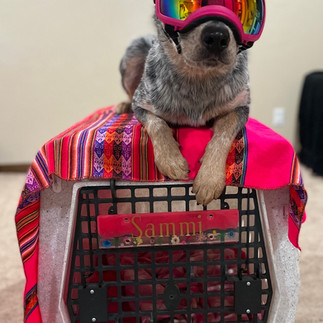Crate Training Tips: Building Comfort and Confidence
- alafosse3
- Nov 8, 2023
- 3 min read
Crate training is a valuable tool in a dog owner's arsenal, promoting safety, security, and a well-behaved pet. When introduced correctly, a crate can become your dog's safe haven, a place where they feel secure and at ease. In this comprehensive guide, we'll explore essential crate training tips to help your dog develop a positive association with their crate.
Make It a Positive Experience
The key to successful crate training is to ensure that your dog views the crate as a welcoming and positive space. The first step in this process is to make the crate a place of reward and comfort. When introducing your dog to their crate, always focus on making it a positive experience. Begin by having them enter the crate voluntarily. Use treats to entice them inside, and once they're comfortably settled, reward them with another treat. This initial association creates a positive impression of the crate.
Provide Entertainment
To keep your dog occupied during crate time, offer them engaging distractions. Items like bully sticks, chew toys, or Kongs filled with peanut butter can be a wonderful way to keep your pet entertained while in the crate. These distractions help them associate the crate with enjoyable moments, making it a place where they can not only rest but also have fun.
Be Patient with Crying or Whining
Crying or whining is a common response when dogs are first introduced to the crate. While it can be tempting to release them immediately to alleviate the noise, it's essential to exercise patience. Waiting until they settle down before opening the crate teaches your dog that quiet behavior leads to freedom. This patience is a key element in helping your dog adjust to the crate and understand the expected behavior while inside.
Consistent Use in All Situations
For effective crate training, consistency is a cornerstone. Use the crate in various situations, including when friends are over, when you're at home, and when you're away. This consistency helps your dog become comfortable with the crate in different scenarios, reinforcing their sense of security and trust in the crate.
An Open-Door Policy
When your dog is not confined to the crate, keep the crate door open. This allows your pet to choose to enter the crate whenever they desire. If they decide to do so, reward them with a high-value treat. This practice reinforces the idea that the crate is a welcoming and rewarding place. An open-door policy empowers your dog to use the crate on their terms, creating a positive and voluntary association.
Create a Cozy Atmosphere
Some dogs may feel more comfortable in a crate when it offers a sense of seclusion. You can achieve this by placing a blanket over the crate, creating a cozy den-like atmosphere. This simple act limits distractions and provides your dog with a private space they can relax in. It's akin to giving them their own room where they can find comfort and solitude.
Crate Training: Building Trust and Comfort
Crate training is not only about providing your dog with a secure and controlled environment; it's also about building trust and comfort. When you follow these crate training tips and make the crate a positive and enjoyable place for your dog, you create a safe haven that fosters a sense of security and relaxation.
For more insights and tips on dog training, keep an eye on our blog. We're here to assist you in creating a strong bond with your canine companion while promoting obedience and well-being. Make crate training a positive and rewarding experience for your pet, and watch as your dog grows to love their crate as their personal sanctuary.






